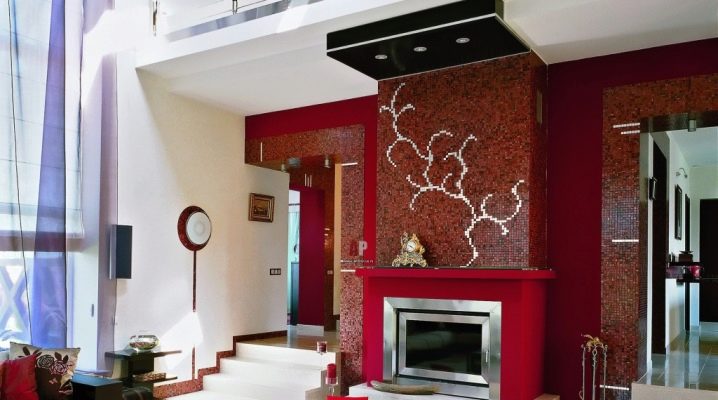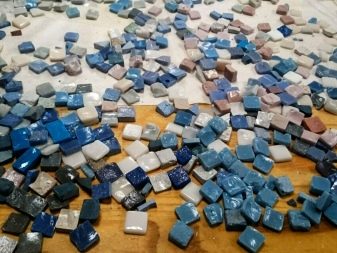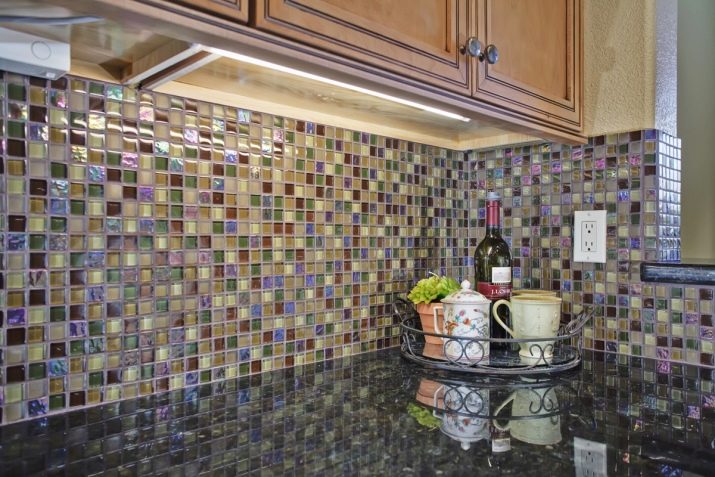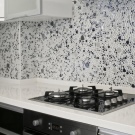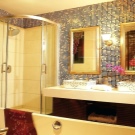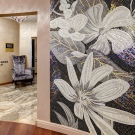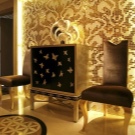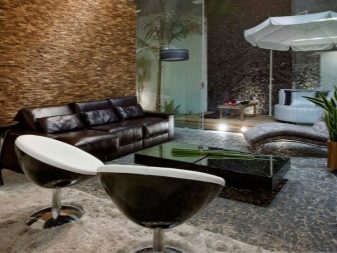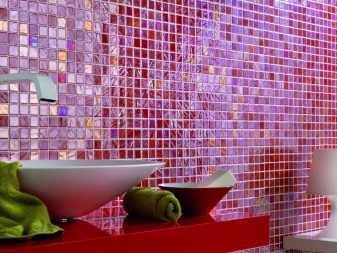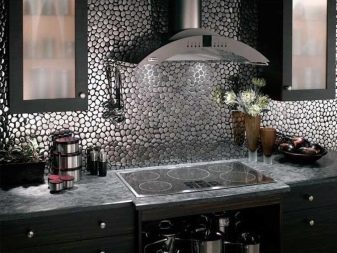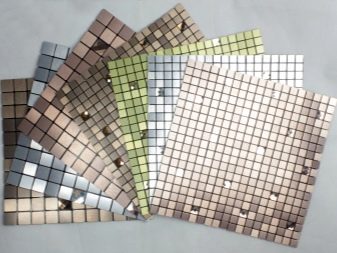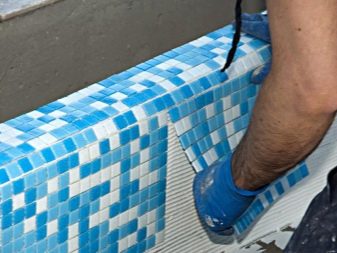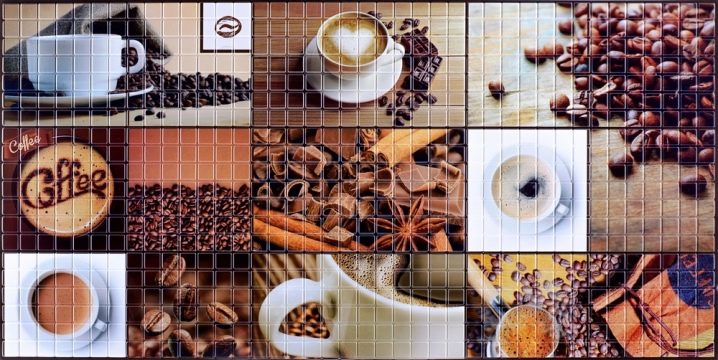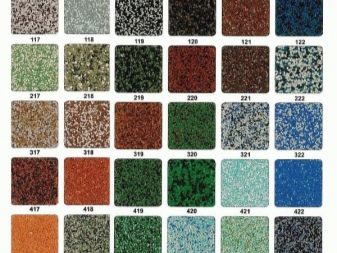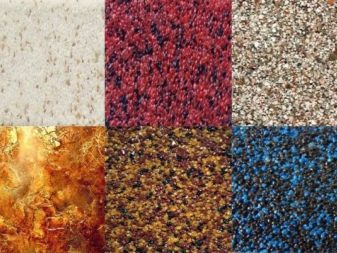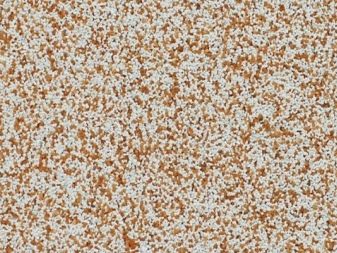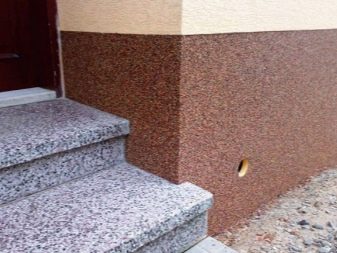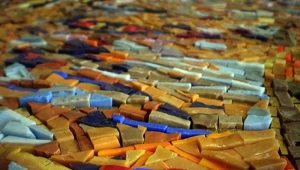Decorative mosaic in a modern interior
The use of decorative mosaics in modern interiors is not an innovation. The history of the use of this material goes back to the Middle Ages. The secret of its unchanged popularity lies in three simple characteristics: quality, beauty and practicality.
Material Features
Mosaic is a coating that is successfully used for finishing various rooms and surfaces. This tile is found in the design of bathrooms and kitchens. It is widely used to decorate living rooms, wall and floor decor. When talking about the mosaic for interior decoration, they imply small details of glass, smalt, glazed ceramics, stone and other materials, so-called tessera.
It is possible to make an easy-to-use apron for the workshop's working area from a tile-mosaic, laying out a fireplace or decorative columns. Mosaic patterns are appropriate in the bedroom as well, you can successfully decorate the head of the bed. Mirror mosaic inserts look favorably in the decor of the living room. By the way, acrylic elements are produced on a sticky basis, so it is not necessary to fix them with glue.
Mosaic floors also look impressive. They are completely made of decorative mosaic, and may alternate with ordinary tiles to achieve the maximum aesthetic effect.
Kinds
The material is selected based on the purpose, type and type of interior.
For different rooms is intended a certain type of mosaic:
- Ceramic. Appeared before others, its properties are close to the ceramic tile. It is characterized by a variety of texture and color. Details are available in two types: glossy and matte.
- Stone It is used for the decoration of floors. It is made from tuff, marble, travertine, occasionally from jasper, granite. Designed shapes and sizes are attached to the mosaic elements by careful polishing.
- From smalt. It represents pieces, bars and plates of opaque colored glass. Distinguishes this material extraordinary strength and reliability.It has various shades, as various ingredients are added to the smalt. Often used for the manufacture of decorative panels.
- Mosaic from glass Made multi-colored, matte and transparent, has a wide range of colors. Thanks to processing on innovative technologies, it has high strength and wear resistance. The most common and famous mosaic is made of Venetian glass.
- Metallic. Often made from steel or brass plates on a rubber or plastic base. Such material has a bronze, golden, silvery shade. Application for finishing of a floor and walls is possible.
In addition to these species, there are also wooden, ceramic and other types of decorative mosaic.
PVC panels
In place of the classic mosaic elements, which require a time-consuming manual layout process, new materials have come. These are tapes of tiles, placed on the grid. It is convenient to attach them to the surface as a monolithic piece. Unfortunately, this is an expensive material.
There are budget options for mosaic tiles. These are sheets of polyvinyl chloride, decorated under a mosaic. These sheets are glued to the base with special solutions. The joints with the ceiling and the floor are covered with decorative panels.
The advantage of this material is that it is not necessary to rub the seams during work, it is waterproof. In addition, the prices for it are quite affordable. That is why the sale today presents a variety of mosaic options from polyvinyl chloride.
This mosaic also has some minor drawbacks: it can be used only on flat surfaces, because even with a slight curvature, the elements do not fit well and look unnatural.
Mosaic plaster
Another spectacular material for the design of modern interiors is mosaic plaster. In addition to the impressive variety of textures and colors, it has durability and an affordable price. Often used for zoning rooms inside the house.
The plaster mosaic is issued several types. They differ in the main characteristics:
- type of filler;
- the method of coloring particles;
- particle size.
The most common component of the filler plaster - marble,occasionally granite or quartz chips are added to it.
By the size of the constituent particles, mosaic plaster is divided into the following types:
- with fine texture;
- with a large invoice;
- with medium texture;
- with a fine texture.
Before purchasing, it is recommended to thoroughly examine the mixture indicators indicated by the manufacturer on the package.
It has mosaic plaster and its drawbacks. There is the possibility of corrosion during the processing of the metal base. Therefore, when working with metal, it is necessary to pre-prime and select a water-based solution. Only whole, intact surfaces can be treated with such plaster. For cleaning plaster and any other mosaic it is recommended to use special means for washing.
How to make a table with a mosaic, see the following video.
